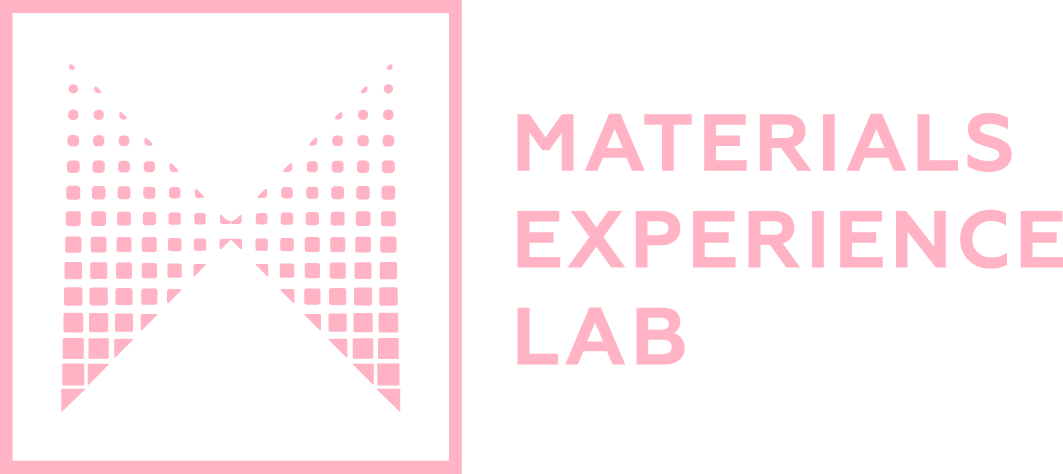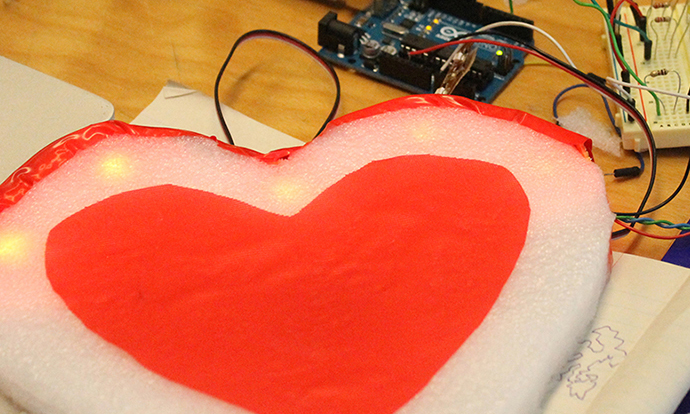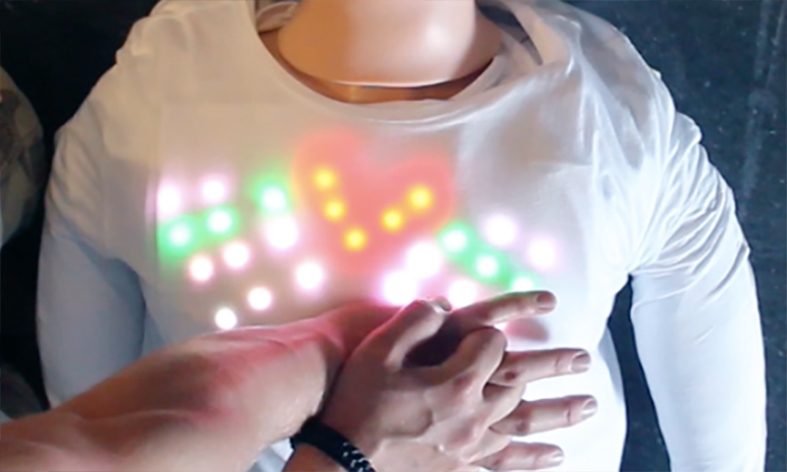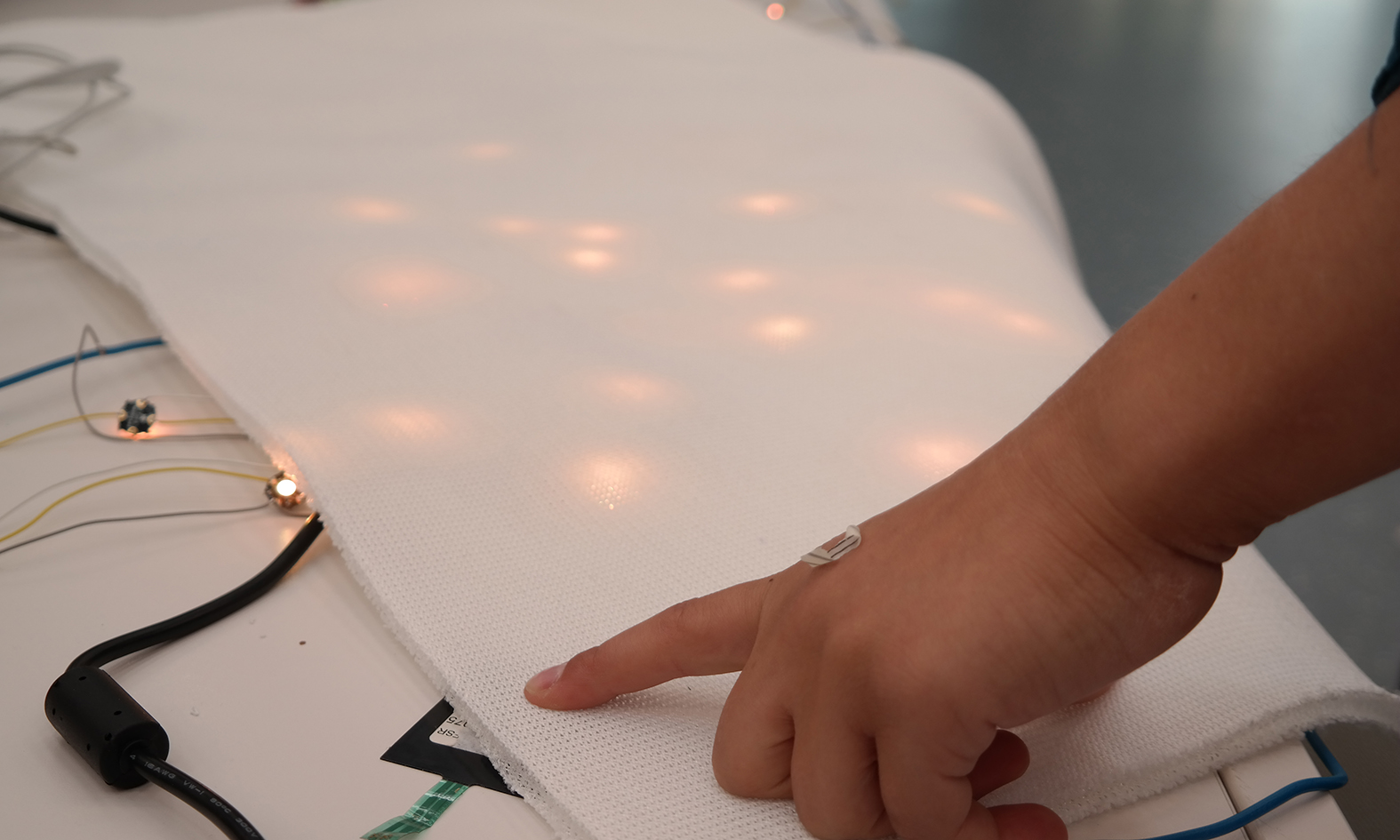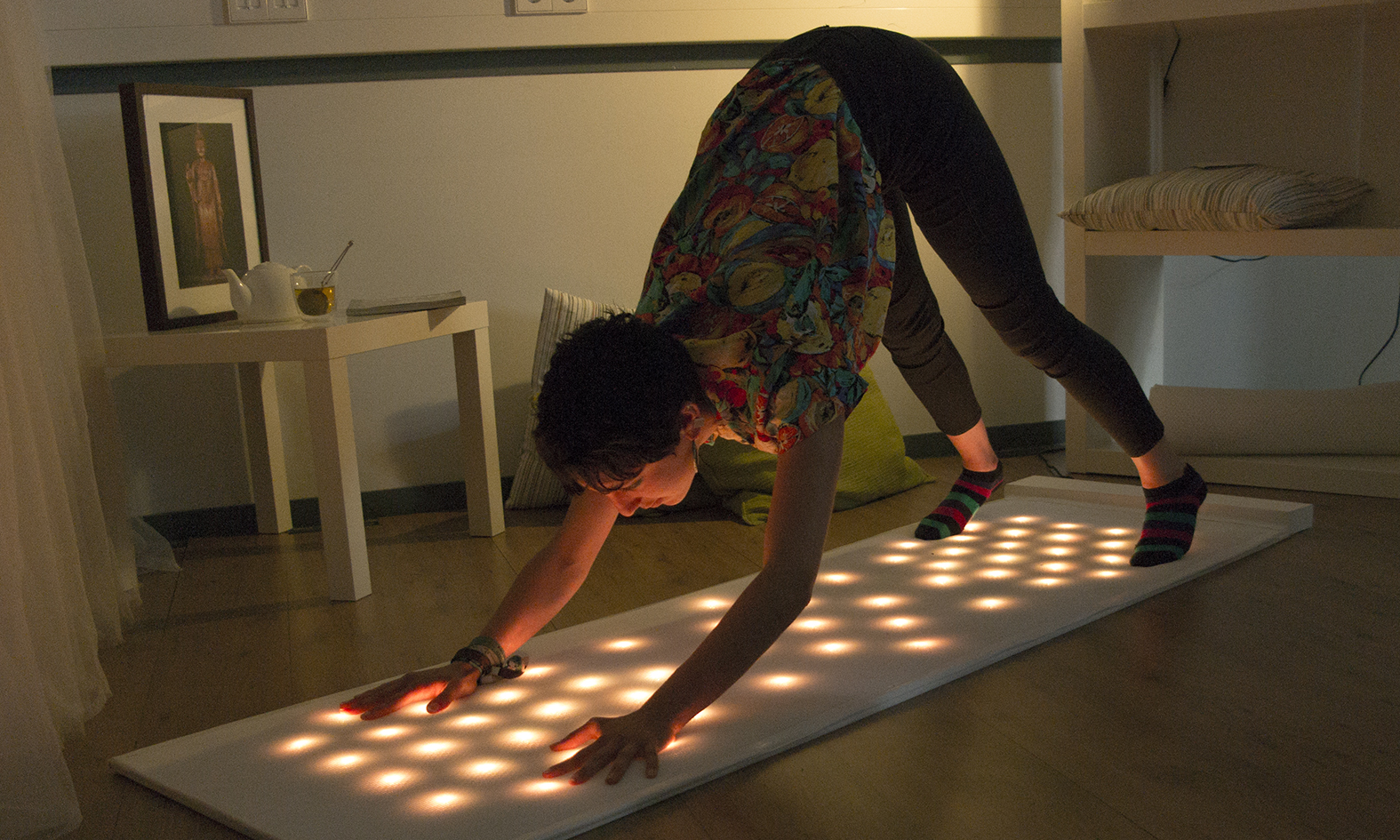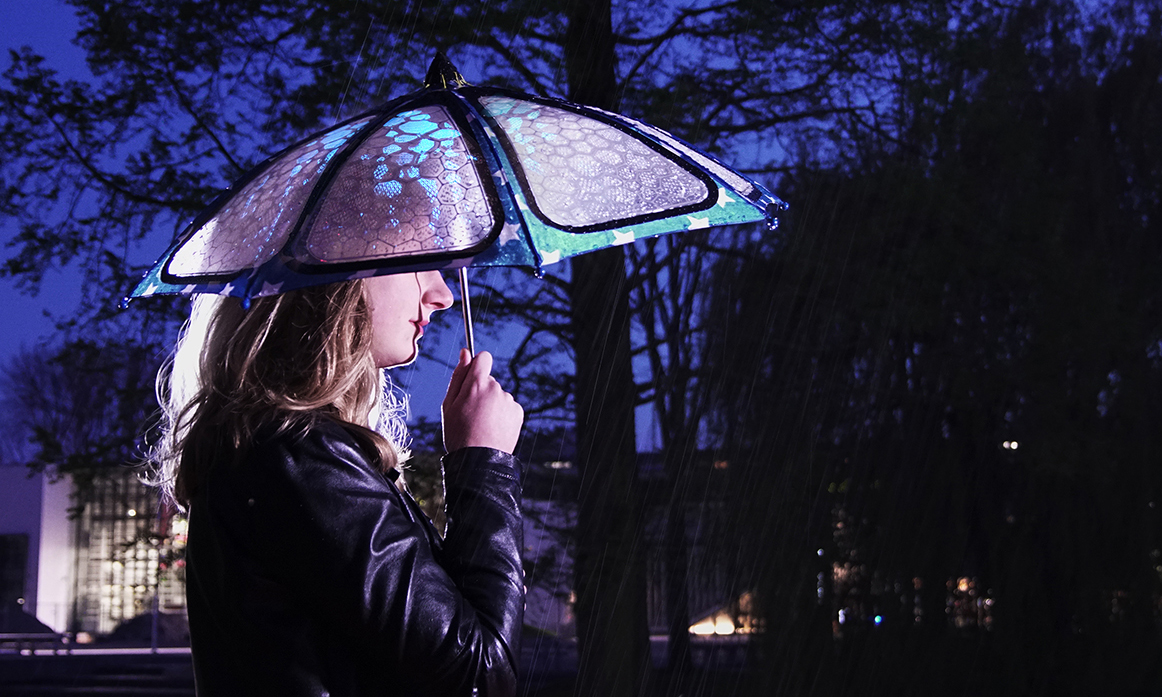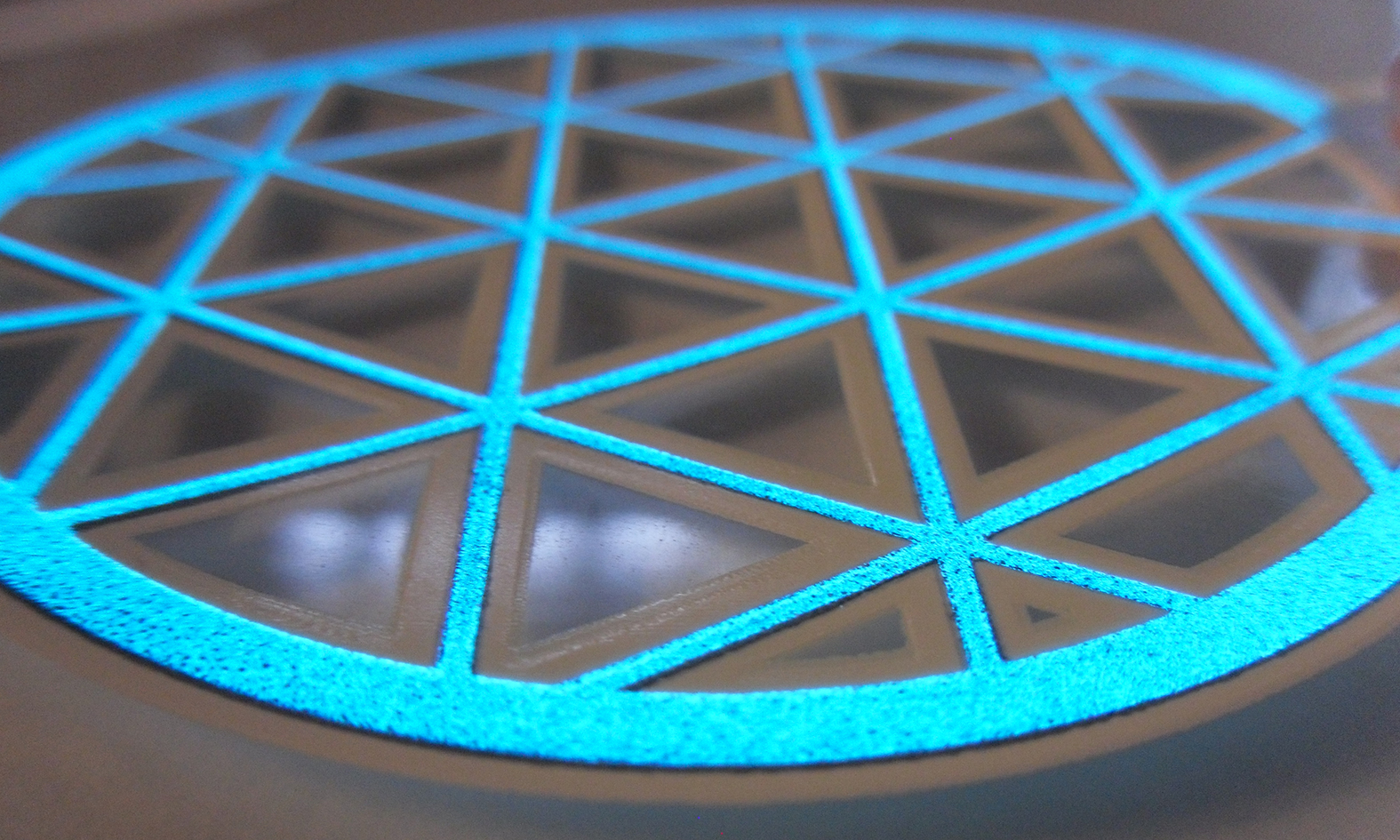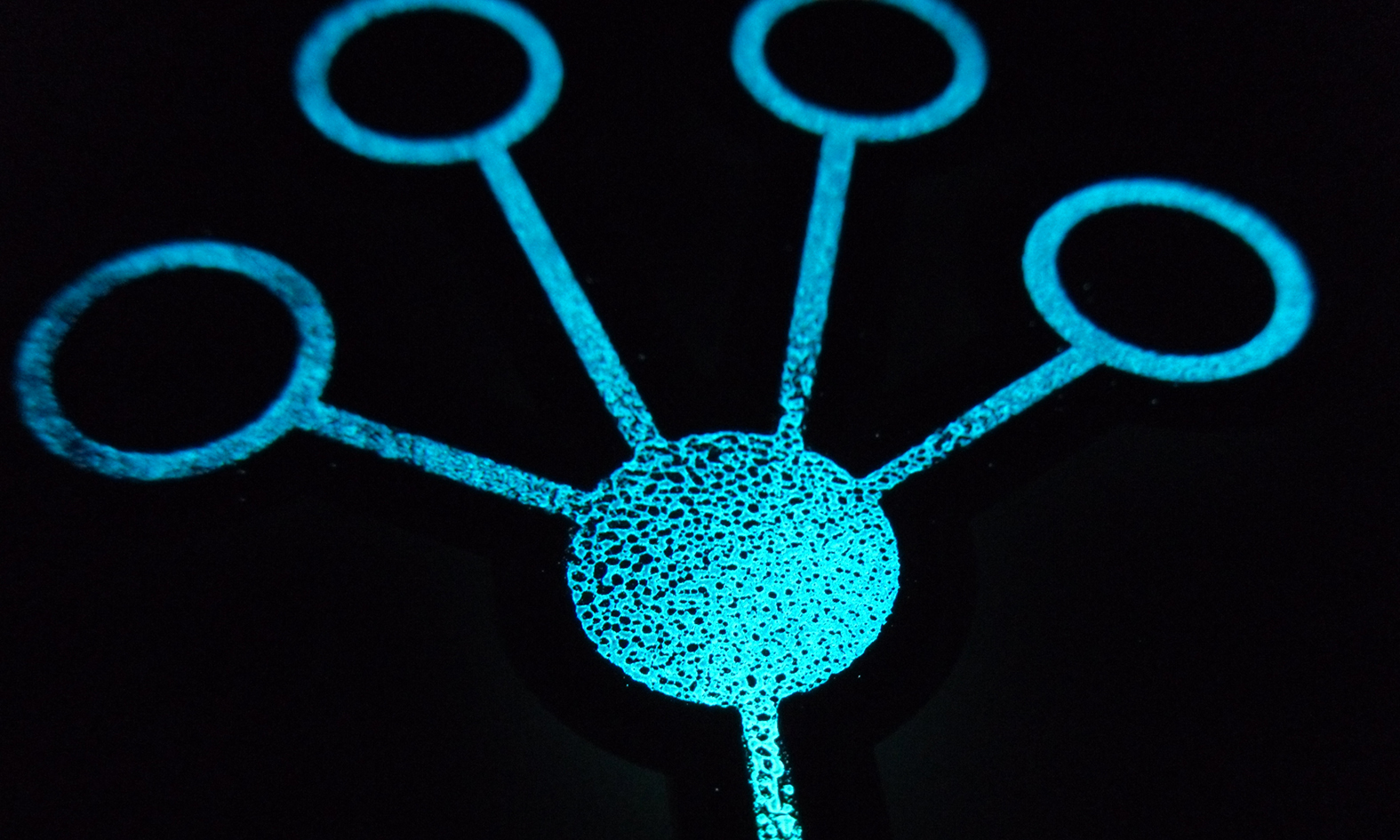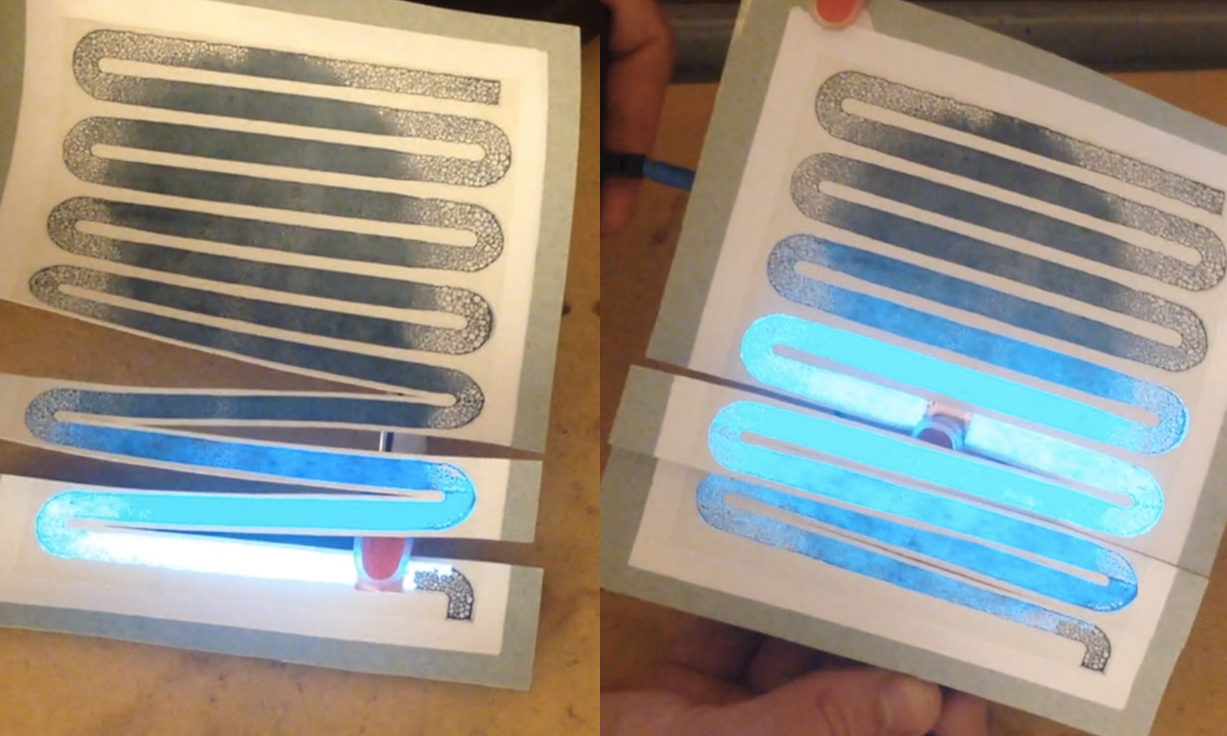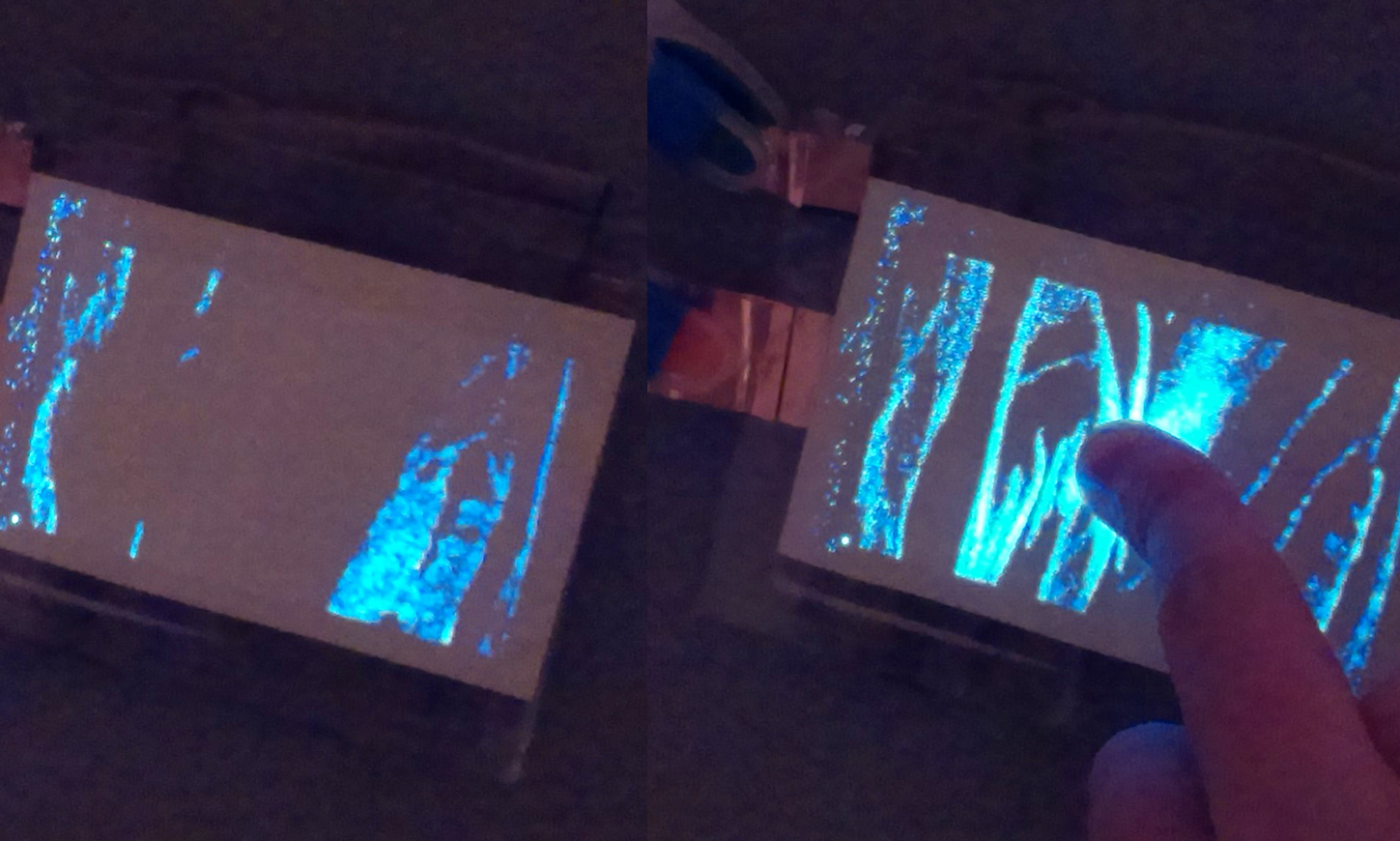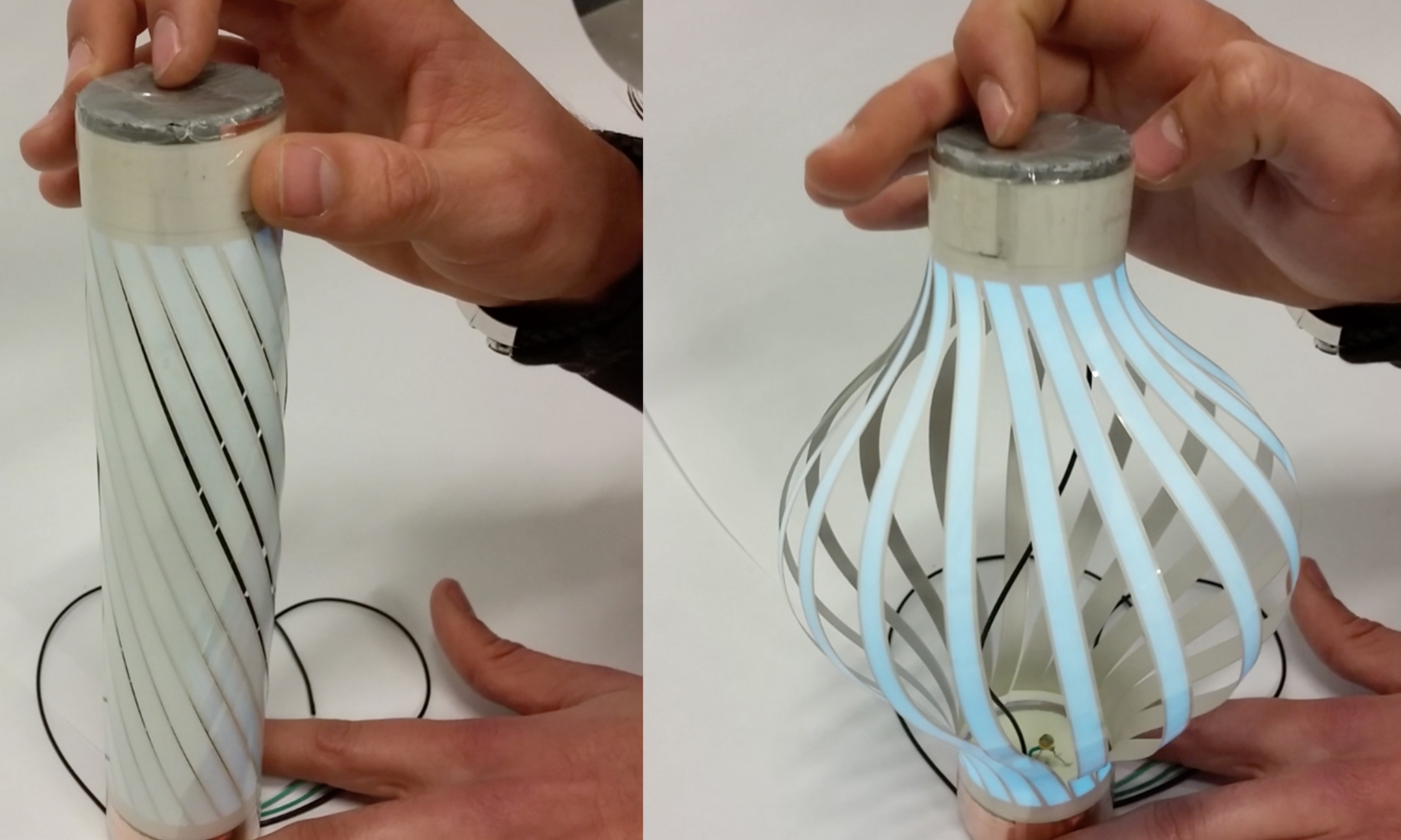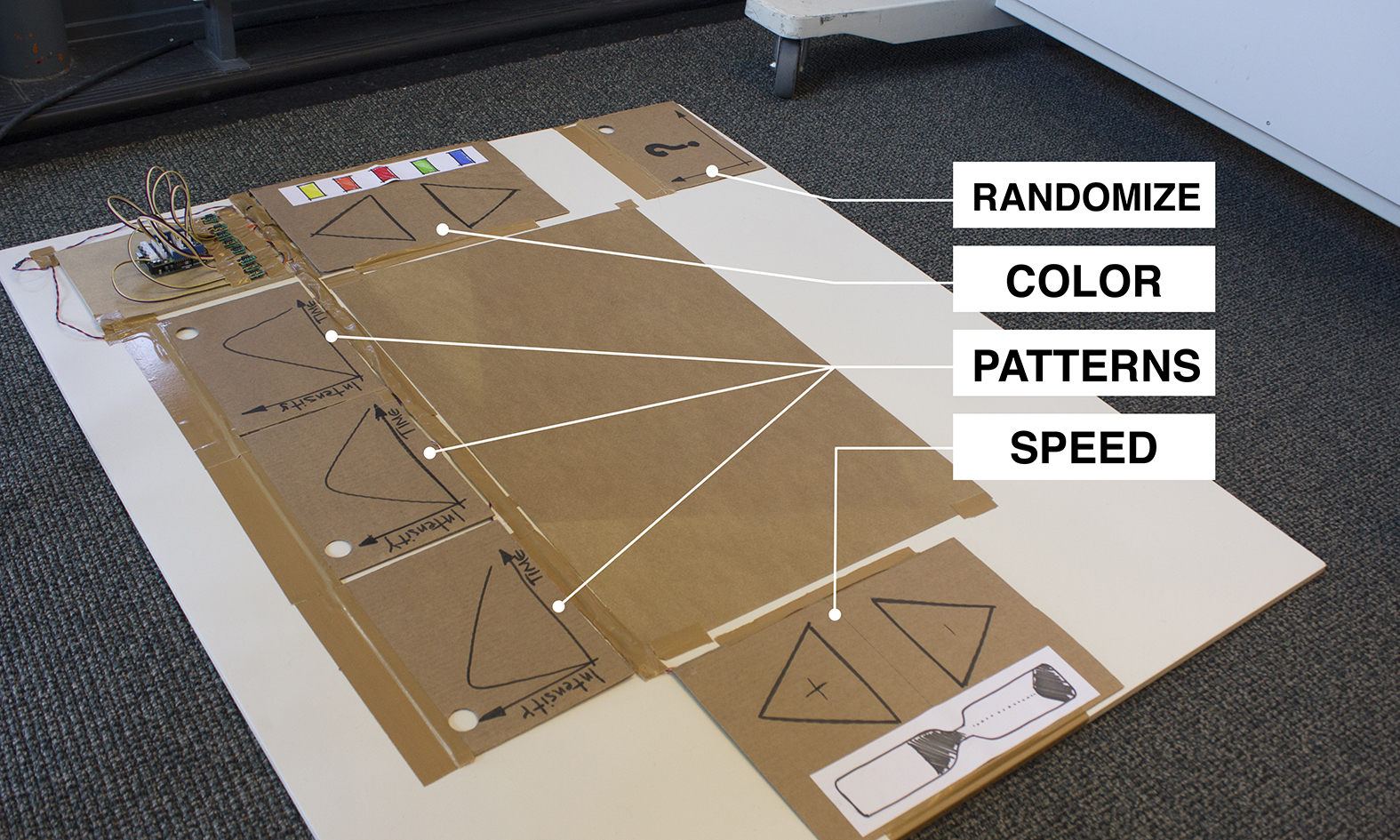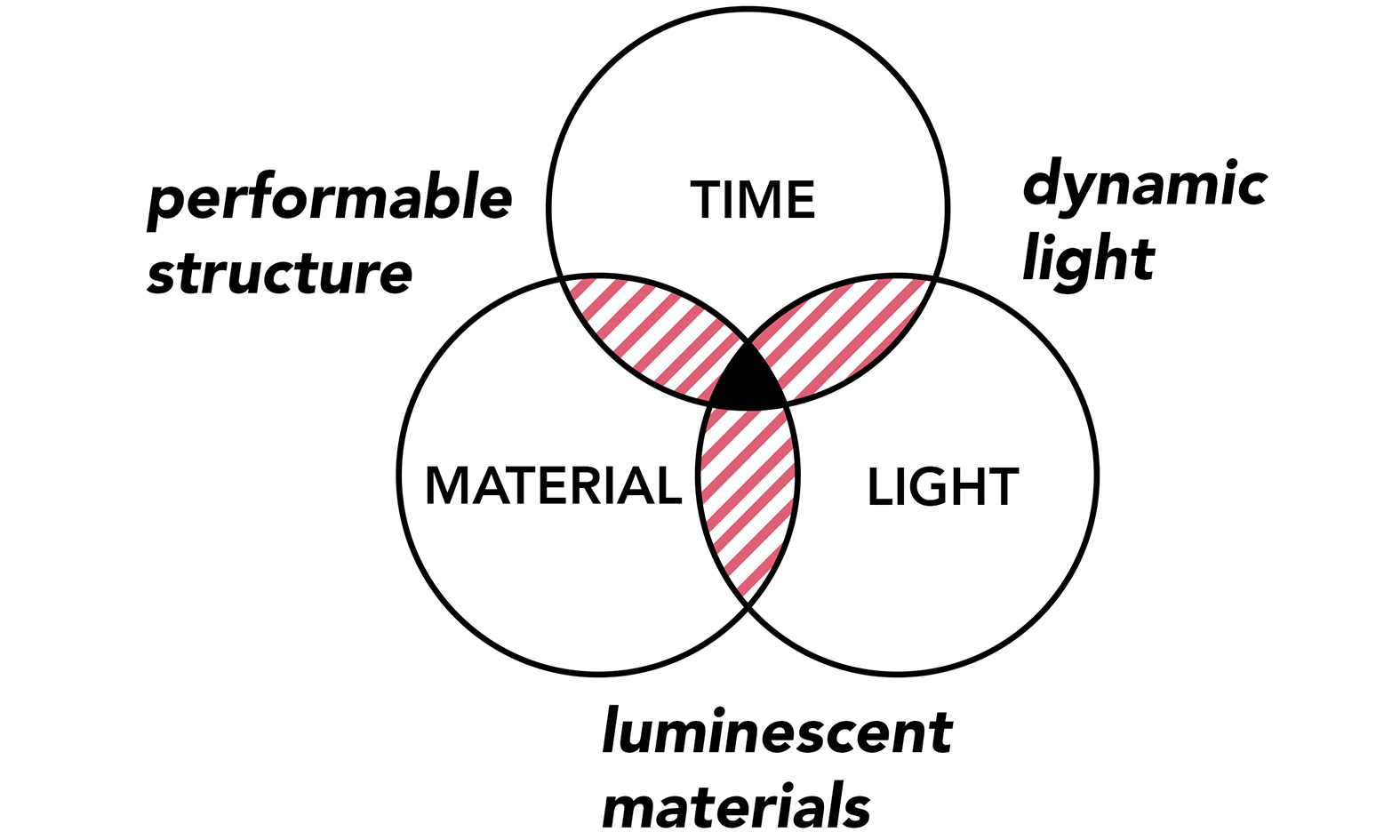DESIGNING WITH UNDERDEVELOPED SMART MATERIALS
In the context of a pioneering EU project, Light.Touch.Matters, this PhD research focuses on the methodological aspect of supporting the designers involved in creativity driven/design-driven material development. This 4-year research investigates, develops, and tests the approach and tools that can help the designers in understanding, exploring, and communicating the experiential qualities of an underdeveloped smart material composite.
The LTM materials are underdeveloped composites of two smart materials, namely, flexible OLEDs and Piezo polymers. Being underdeveloped, the LTM materials were introduced to the designers, through some of their unique characteristics, including their thin and flexible structure, and their sensing and responding functionalities. In four design cases, we investigated how departing from a material description influence students’ activities and decisions, towards conceptualising and prototyping meaningful applications.
Our analysis of the cases suggests that designer’s lack of understanding on material design variables (as the composite and its qualities are likely underspecified) and the boundaries hinders an effective exploration of its potentials. Particularly, the temporal and performative characteristics of the LTM materials can be hardly captured through descriptions and physical, non-interactive material samples.
To better understand what material design variables are in designing with a smart material, we conducted the second round of case studies. In series of academic projects, including a Master’s graduation project and materials for design course, we asked our students to design with electroluminescent (EL) materials, departing from the raw ingredients.
EL materials are light emitting electrically powered composite of at least four stacks of materials, including two conductors, phosphor paste and dielectric paste, deposited on a substrate. Through a material-driven design process, the students gained practical knowledge on fabrication of the EL materials and the material design variables to influence the experiential qualities. The discoveries along the process of tinkering, supplemented by a theoretical lens (materials experience framework) mobilized the design process towards realizing the final concepts, including an origami light controller and “a Drop of Light” concept.
The origami light controller combines structural deformation and dynamic light behavior, and in doing so, instantiates the gap in prototyping the LTM materials, using non-interactive material samples or/and electronic components. Such smart material demonstrators allows the development team to experience and discuss the dynamic and performative qualities of the LTM materials and explicate the critical variables and boundaries in relation to them.
The final part of the PhD research is dedicated to developing and testing a design tool for prototyping the performative and temporal characteristics of the LTM materials. We argue that even though the smart material demonstrators raise awareness among the development team about certain experiential qualities, they do not actively enable further design explorations. To that aim, we used a hybrid technique to digitally augment different areas of a physical, performable mock-up (e.g., representing the dynamic light behavior).
COLLABORATORS
PublicationS
-
Barati, B., Karana, E., Foole, M. (in review, available upon request). Experience Prototyping Smart Material Composites. In proceedings of EKSIG 2017.
-
Barati, B., Karana, E., & Hekkert, P. (in review, available upon request). Understanding The Experiential Qualities of Light Touch Matters: Toward a Tool Kit. Journal of Artifact.
-
Jansen, K., Claus, S., Barati, B. (2017). Designing of a semi-transparent Electroluminescent Umbrella. In Proceedings of Smart System Integration.
-
Barati, B., Karana, E., Jansen, K., & Hekkert, P. (2016, February). Functional Demonstrators to Support Understanding of Smart Materials. In Proceedings of the TEI’16: Tenth International Conference on Tangible, Embedded, and Embodied Interaction (pp. 386-391). ACM.
-
Barati, B., Karana, E., & Hekkert, P., Jönsthövel, I. (2015, November). Designing with an Underdeveloped Computational Composite for Materials Experience. In Proceedings of EKSIG 2015: Experiential Knowledge Special Interest Group.
-
Barati, B., Karana, E, Hekkert, P. (2015, October). From Way Finding in the Dark to Interactive CPR Trainer: Designing with Computational Composites. In Proceedings of DesForm 2015.
- Karana, E., Barati, B., Rognoli, V., & Zeeuw Van Der Laan, A. (2015). Material driven design (MDD): A method to design for material experiences. International journal of design, 19 (2) 2015.
Funded By
The European Commission’s 7th Framework Programme (FP7)
Researcher
SUPERVISORS
Collaborators
Involved Graduation Students
Milou Foole
